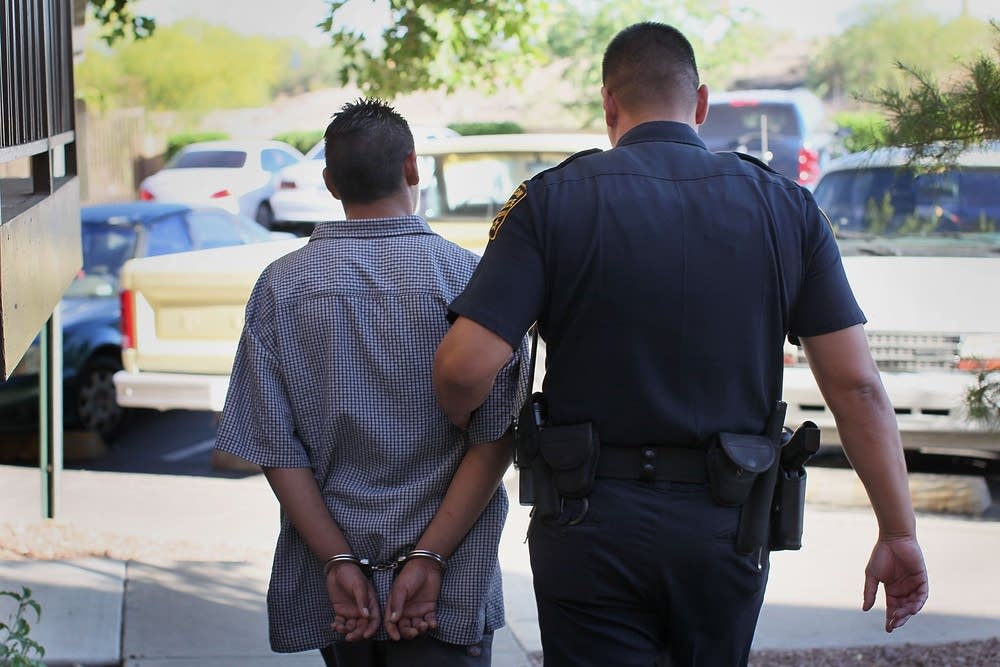The criminal justice system needs to rethink the way it manages teenagers who misbehave, according to Laurence Steinberg, an adolescent brain development expert at Temple University.
Because the adolescent brain is still developing, the risks taken and mistakes made by young offenders may be more outside of their control than we think, said Steinberg.
“No one is saying that kids who commit horrific crimes shouldn’t be punished,” Steinberg told the New York Times. “But most in the scientific community think that we know that since this person is likely to change, why not revisit this when he’s an adult and see what he’s like?”
Steinberg is in the Twin Cities to speak at the University of Minnesota at a lecture titled “Should the Science of Adolescent Brain Development Inform Legal Policy?”
Steinberg joined The Daily Circuit Thursday, Nov. 15 to discuss his research.
Here are six facts we gleaned from Steinberg’s appearance on The Daily Circuit:
1. Adolescent brains have weak brakes
“One way to think about it is a kind of competition or balance between two different brain systems: A system that impels us to seek out rewards and go for novelty and excitement, sensation seeking, and then a brain system that really puts the brakes on impulses,” Steinberg said.
“What we now understand about the adolescent brain is that both of these systems are changing during the course of adolescence. The reward seeking system is becoming more easily aroused, particularly during early adolescence, which makes kids seek and go after rewards. The braking system is still developing very, very slowly and it’s not fully mature until people are well into their 20s.”
2. Adolescents take more risks in groups
In Steinberg’s lab at Temple University, researchers put people through a driving simulation and monitor their brain activity with MRI. The game involves a number of risk-taking scenarios.
“When adolescents are playing the game without their friends watching them, they don’t play it any differently than adults do,” he said.
The game player’s friends are then brought into a room to watch their friend, but they can’t interact.
“Just knowing that your friends are watching you doubles the number of risks teenagers take,” he said. “If we look at adults, it has no impact on their behavior whatsoever.”
When friends are watching, the brain activity changes too.
“There was much greater activation of rewards centers in the brain when the adolescent was playing the game being watched by his friends,” Steinberg said. “In adults, the brain activity looks exactly the same when they are playing alone versus playing with their friends watching them. It leads us to think that something is going on when teenagers are with their peers that makes them especially sensitive to reward.”
3. The behavior-governing prefrontal cortex is morphing
“What happens during adolescence is that this part of the brain becomes a more efficient tool through changes in the anatomy of the prefrontal cortex, but also it becomes a better connected part of the brain in its ability to communicate with other brain regions,” Steinberg said. “The period of time during which this is happening really extends from pre-adolescence all the way into the mid-20s.”
4. Adult guidance makes a difference
“If we’re talking about a child who is at a stage of development where his own self-control is still immature and still developing, one thing that can help him is to have self-control imposed on him by other people,” he said. “That’s a role parents play that helps protect their youngsters from engaging in risky and reckless behavior.”
5. Ninety percent of kids who break the law during adolescence don’t become adult criminals
“A lot of the misbehavior that adolescents engage in is transient,” he said. “It happens during adolescence partly as a function of the immaturity that is characteristic of the period and then it goes away without any intervention whatsoever.”
6. Teen offenders are too often treated like adults when they hit the justice system
“It is not that unusual for our justice system to criminalize what I think most of us would consider to be, you know, stupid adolescent behavior,” he said. “They come into contact with a system that just has stopped viewing them as what they are, which is kids. They are not adults. We need to go back to an earlier point in our history where we had a separate juvenile justice system that didn’t have such a porous border with the adult system, which is what we have right now.”
- Abuse & The Abuser
- Achievement
- Activity, Fitness & Sport
- Aging & Maturity
- Altruism & Kindness
- Atrocities, Racism & Inequality
- Challenges & Pitfalls
- Choices & Decisions
- Communication Skills
- Crime & Punishment
- Dangerous Situations
- Dealing with Addictions
- Debatable Issues & Moral Questions
- Determination & Achievement
- Diet & Nutrition
- Employment & Career
- Ethical dilemmas
- Experience & Adventure
- Faith, Something to Believe in
- Fears & Phobias
- Friends & Acquaintances
- Habits. Good & Bad
- Honour & Respect
- Human Nature
- Image & Uniqueness
- Immediate Family Relations
- Influence & Negotiation
- Interdependence & Independence
- Life's Big Questions
- Love, Dating & Marriage
- Manners & Etiquette
- Money & Finances
- Moods & Emotions
- Other Beneficial Approaches
- Other Relationships
- Overall health
- Passions & Strengths
- Peace & Forgiveness
- Personal Change
- Personal Development
- Politics & Governance
- Positive & Negative Attitudes
- Rights & Freedom
- Self Harm & Self Sabotage
- Sexual Preferences
- Sexual Relations
- Sins
- Thanks & Gratitude
- The Legacy We Leave
- The Search for Happiness
- Time. Past, present & Future
- Today's World, Projecting Tomorrow
- Truth & Character
- Unattractive Qualities
- Wisdom & Knowledge






Comments